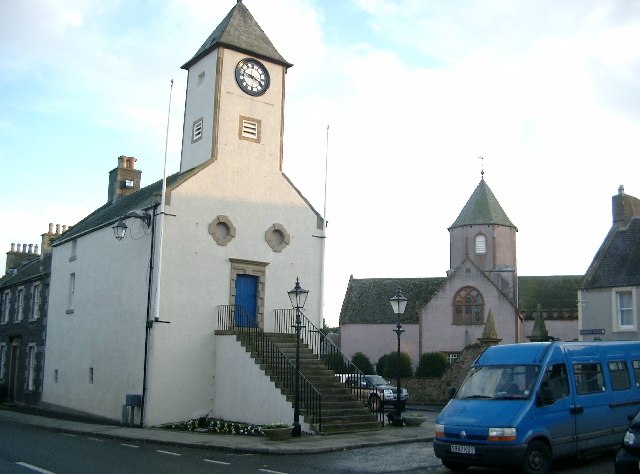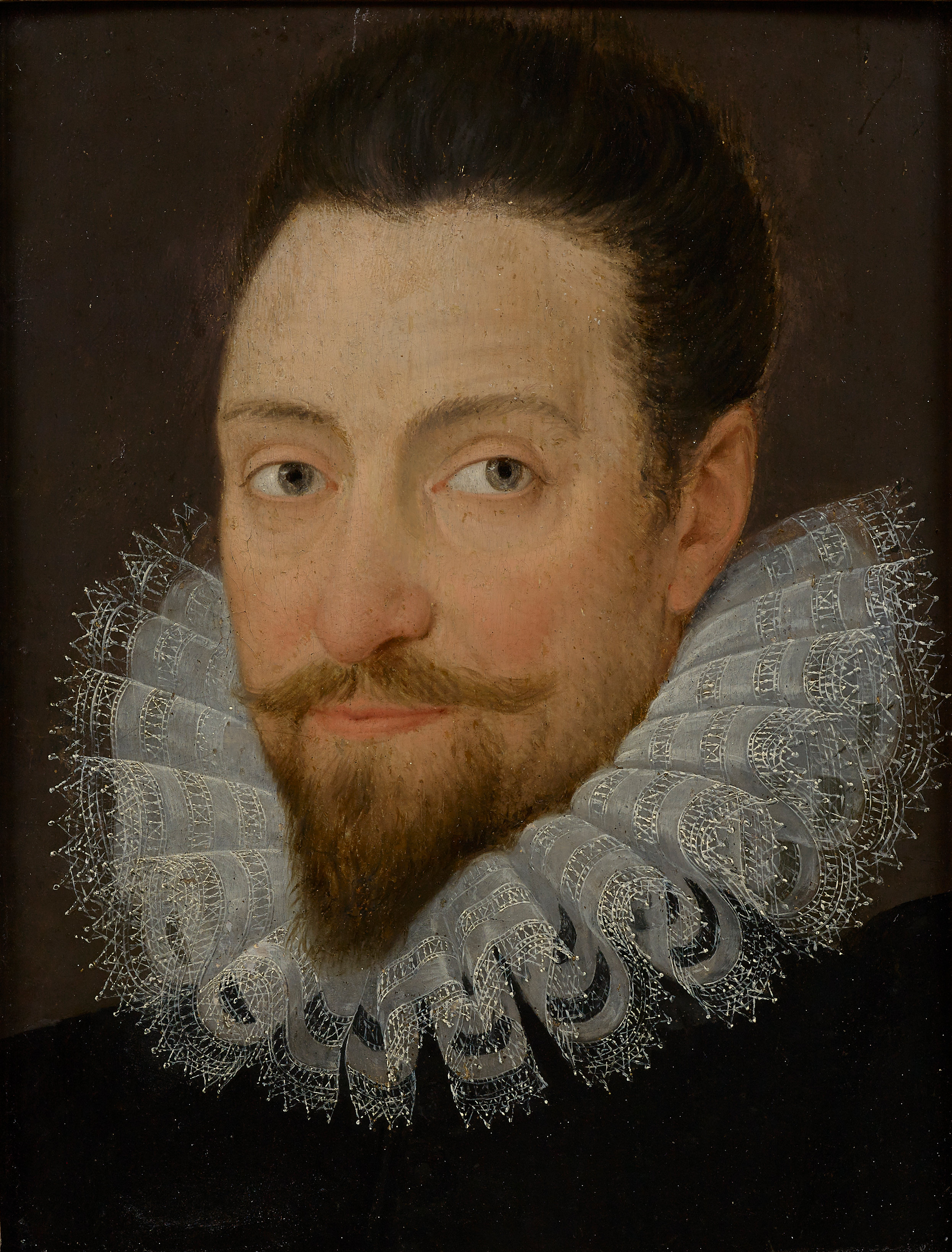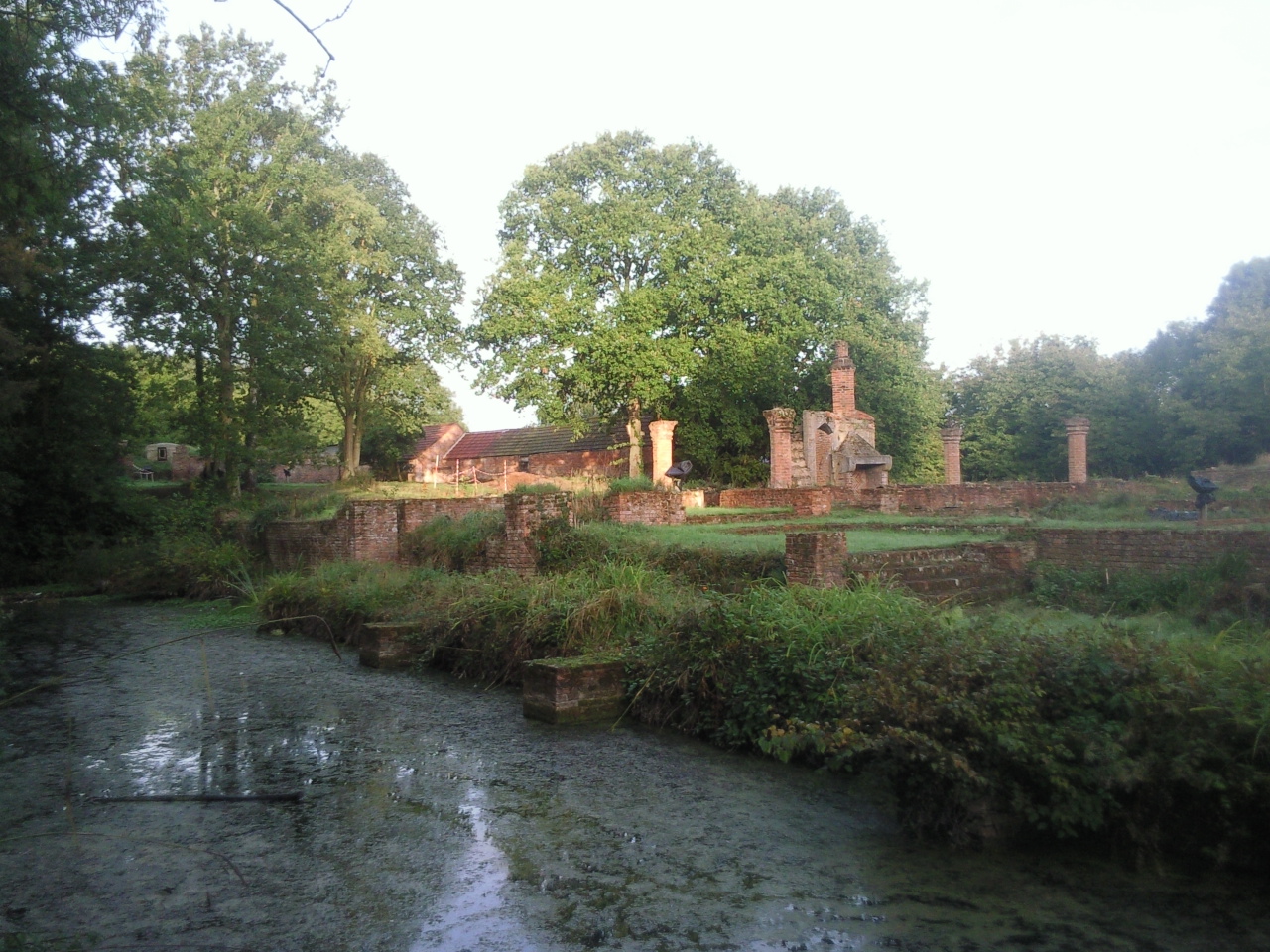|
David Erskine, Commendator Of Dryburgh
David Erskine, Commandator of Dryburgh was a Scottish landowner. He was a son of Robert Erskine, Master of Erskine, a brother of John Erskine, Lord Erskine, and Jean Home. In 1556 his uncle, the Earl of Mar, installed him as Commendator of Dryburgh Abbey and Inchmahome Priory, positions securing him a large income. His cousin Adam Erskine was made Commendator of Cambuskenneth. Erskine's surviving accounts show that his kinsman Arthur Erskine of Blackgrange and his wife Magdalen Livingstone stayed at Dryburgh on the 9 and 10 of October 1566 before riding to Jedburgh to join Mary, Queen of Scots. On 21 March 1567 he witnessed and signed an inventory of guns and artillery equipment at Edinburgh Castle. The occasion of making the inventory was that his uncle, now Earl of Mar, resigned responsibility for the castle to James Balfour of Pittendreich. In a formal ceremony, Erskine, with John Cunningham of Drumquhassil, Alexander Erskine of Gogar, Alexander Forrester of Garden, and Arch ... [...More Info...] [...Related Items...] OR: [Wikipedia] [Google] [Baidu] |
John Erskine, Earl Of Mar (died 1572)
John Erskine, 6th Earl of Mar (died 28 October 1572) was a Scottish aristocrat and politician. He was the custodian of the infant James VI of Scotland and Regent of Scotland. Erskine was a son of John Erskine, 5th Lord Erskine and Lady Margaret Campbell, a daughter of Archibald Campbell, 2nd Earl of Argyll. His father was a guardian of King James V and afterwards of Mary, Queen of Scots. Career John was Commendator of Dryburgh Abbey from 1547, He succeeded his father as 6th Lord Erskine in 1552. Erskine joined the religious reformers in 1559, but was never very ardent in the cause. He did subscribe to the letter asking the Calvinist reformer John Knox to return to Scotland in 1557. The custody of Edinburgh Castle was in his hands during the struggle between the regent, Mary of Guise, and the Lords of the Congregation, during which he appears to have acted consistently in the interests of peace. When Mary, Queen of Scots, returned to Scotland in 1561 Lord Erskine was a mem ... [...More Info...] [...Related Items...] OR: [Wikipedia] [Google] [Baidu] |
Alexander Forrester Of Garden
Alexander Forrester of Garden ( fl. 1550-1599) was a Scottish landowner. He was the son of David Forrester of Torwood and Garden and Elizabeth Sandilands, daughter of James Sandilands of Slamannan. The name may be spelled "Forester" or "Forster". They were keepers of the royal Torwood Forest. In 1541 the Laird of Torwoodhead built a stable for the mares of James V of Scotland in the royal forest. Their home was Torwood Castle, where a datestone of "1566" suggests that Alexander Forrester built the remaining structure. "Garden" is near Arnprior, several miles to the west of Torwood. Robert Beaton of Creich and "Alexander Forster, laird of Torwood" were both in Paris in October 1560 and carried letters from the English ambassador Nicholas Throckmorton to William Cecil in London. Alexander Forrester was Provost of Stirling in 1562 and 1565 and had a house in Stirling. On 21 March 1567 he witnessed and signed an inventory of guns and artillery equipment at Edinburgh Castle. The o ... [...More Info...] [...Related Items...] OR: [Wikipedia] [Google] [Baidu] |
16th-century Scottish People
The 16th century begins with the Julian year 1501 ( MDI) and ends with either the Julian or the Gregorian year 1600 ( MDC) (depending on the reckoning used; the Gregorian calendar introduced a lapse of 10 days in October 1582). The 16th century is regarded by historians as the century which saw the rise of Western civilization and the Islamic gunpowder empires. The Renaissance in Italy and Europe saw the emergence of important artists, authors and scientists, and led to the foundation of important subjects which include accounting and political science. Copernicus proposed the heliocentric universe, which was met with strong resistance, and Tycho Brahe refuted the theory of celestial spheres through observational measurement of the 1572 appearance of a Milky Way supernova. These events directly challenged the long-held notion of an immutable universe supported by Ptolemy and Aristotle, and led to major revolutions in astronomy and science. Galileo Galilei became a champion o ... [...More Info...] [...Related Items...] OR: [Wikipedia] [Google] [Baidu] |
Lauder
The former Royal Burgh of Lauder (, gd, Labhdar) is a town in the Scottish Borders in the Shires of Scotland, historic county of Berwickshire. On the Southern Upland Way, the burgh lies southeast of Edinburgh, on the western edge of the Lammermuir Hills. Etymology Although Lauder sits in the valley of Leader Water, William J. Watson, Watson notes that the names Lauder and Leader appear to be unconnected. In the earliest sources Lauder appears as ''Lawedder'' and ''Loweder''. The name may be derived from the Common Brittonic, Brittonic ''lǭwadr'', meaning "washing or bathing place" (Breton language, Breton ''laouer''). Or else, Lauder may be named from a word related to Middle Welsh ''llawedrawr'', "a heap of ruins". Medieval history Below Lauder are the lands of Kedslie which were bounded on the west by a road called "Malcolm's rode", and it is thought this formed part of the Roman road known as Dere Street, which passed through Lauder. Hardie suggests that it had been rec ... [...More Info...] [...Related Items...] OR: [Wikipedia] [Google] [Baidu] |
Teind
In Scotland a teind () was a tithe derived from the produce of the land for the maintenance of the clergy. It is also an old lowland term for a tribute due to be paid by the fairies to the devil every seven years. Found in the story of Tam Lin as well as in the ballad of Thomas the Rhymer. Teind is a Scots word for tithe, meaning a tenth part. Scottish Reformation and the Thirds of Benefices Teinds had been used to support the living expenses of clergy. On 15 February 1562 the Privy Council of Scotland regulated the collection of a third of the teinds for the stipends of ministers of the reformed church and the expenses of the royal household. A survey was made of rentals and revenues received by clergy. The resulting "Books of Assumption" is a record of the wealth of the church of Scotland at the Reformation and reveals the names of many secular or laymen owners who then owned former ecclesiastic properties. The detailed record also reveals the variety of agricultural produc ... [...More Info...] [...Related Items...] OR: [Wikipedia] [Google] [Baidu] |
Pound Scots
The pound (Modern and Middle Scots: ''Pund'') was the currency of Scotland prior to the 1707 Treaty of Union between the Kingdom of Scotland and the Kingdom of England, which created the Kingdom of Great Britain. It was introduced by David I, in the 12th century, on the Carolingian monetary system of a pound divided into 20 shillings, each of 12 pence. The Scottish currency was later devalued relative to sterling by debasement of its coinage. By the time of James III, one pound Scots was valued at five shillings sterling. Silver coins were issued denominated in merk, worth 13s.4d. Scots (two-thirds of a pound Scots). When James VI became King James I of England in 1603, the coinage was reformed to closely match sterling coin, with £12 Scots equal to £1 sterling. No gold coinage was issued from 1638 to 1700, but new silver coinage was issued from 1664 to 1707. With the Acts of Union 1707, the pound Scots was replaced by sterling coin at the rate of 12:1 (£1 Scots ... [...More Info...] [...Related Items...] OR: [Wikipedia] [Google] [Baidu] |
Jean Fleming, Countess Of Cassilis
Jean Fleming, Countess of Cassilis (1553/4–1609) was a Scottish noblewoman and courtier at the court of James VI of Scotland, and a survivor of domestic violence. Biography Jean Fleming was born in 1553/4, daughter of James Fleming, 4th Lord Fleming and Barbara Hamilton, a sister of Lord John Hamilton and Claude Hamilton. Upon Lord Fleming's death, his title and estates passed to her uncle John Fleming, 5th Lord Fleming, and Jean Fleming had to resort to action in the Privy Council of Scotland to secure a share of the inheritance. She married John Maitland, then Keeper of the Privy Seal of Scotland and later Lord Chancellor of Scotland, on 16 January 1583 and she was then called "Lady Thirlestane". He was 11 years older than her. The couple had two children, Anne, born in 1590 and who died in 1609, and John Maitland, a judge who became President of the Parliament of Scotland and of Privy Council. In December 1587 the poet William Fowler dedicated his '' Triumphs of Petrar ... [...More Info...] [...Related Items...] OR: [Wikipedia] [Google] [Baidu] |
William Stewart Of Caverston
William Stewart of Caverston and Traquair (died 1605), was a Scottish landowner and Captain of Dumbarton Castle. Career He was a brother of John Stewart of Traquair, Sir John Stewart of Traquair House, Traquair. His lands were at Caverston, or Caberston, sometimes given as "Taberstoun". Caverston was a property of the Traquair Stewarts in Innerleithen parish with a fortified house. No visible traces of Caberston Tower remain. Regent Moray gave William Stewart a charter of the lands of "Caverstoun" in January 1568, which notes that the lands in Peebleshire were formerly held from the James Hepburn, 4th Earl of Bothwell, Earl of Bothwell and were part of the Crichton Castle, Barony of Crichton. Stewart was appointed an extraordinary attendant at the court of James VI of Scotland in 1580. An extraordinary postholder was not expected to be present at court at all times, unless required by the Lord Chamberlain, and might not have a fee. He was one of the 25 gentlemen appointed to ri ... [...More Info...] [...Related Items...] OR: [Wikipedia] [Google] [Baidu] |
Edward Wotton, 1st Baron Wotton
Edward Wotton, 1st Baron Wotton (1548–1626) was an English diplomat and administrator. From 1612 to 1613, he served as a Lord of the Treasury. Wotton was Treasurer of the Household from 1616 to 1618, and also served as Lord Lieutenant of Kent from 1604 until 1620. Early life Born in 1548, Edward was the eldest son of Thomas Wotton (1521–1587) by his first wife, Elizabeth, daughter of Sir John Rudston, Lord Mayor of London in 1528. Edward does not appear to have been educated at any English university, but made up for the deficiency by long study on the continent. In 1579 Bernardino de Mendoza, the Spanish ambassador, stated that Wotton had spent three or four years among the Spanish residents at Naples and described him as "a man of great learning and knowledge of languages."'' Cal. Simancas MSS''.1568–79, pp. 672, 679 He was certainly an accomplished French, Italian, and Spanish scholar; Mendoza also thought him "a creature of Walsingham's," but was unable to discover wh ... [...More Info...] [...Related Items...] OR: [Wikipedia] [Google] [Baidu] |
Francis Walsingham
Sir Francis Walsingham ( – 6 April 1590) was principal secretary to Queen Elizabeth I of England from 20 December 1573 until his death and is popularly remembered as her "spymaster". Born to a well-connected family of gentry, Walsingham attended Cambridge University and travelled in continental Europe before embarking on a career in law at the age of twenty. A committed Protestant, during the reign of the Catholic Queen Mary I of England he joined other expatriates in exile in Switzerland and northern Italy until Mary's death and the accession of her Protestant half-sister, Elizabeth. Walsingham rose from relative obscurity to become one of the small coterie who directed the Elizabethan state, overseeing foreign, domestic and religious policy. He served as English ambassador to France in the early 1570s and witnessed the St. Bartholomew's Day massacre. As principal secretary, he supported exploration, colonization, the use of England's maritime strength and the ... [...More Info...] [...Related Items...] OR: [Wikipedia] [Google] [Baidu] |
Alexander Elphinstone, 4th Lord Elphinstone
Alexander Elphinstone, 4th Lord Elphinstone (1552-1638), was a Scottish courtier, landowner, and Lord Treasurer Alexander Elphinstone was the son of Robert Elphinstone, 3rd Lord Elphinstone (1530-1602) and Margaret Drummond, daughter of Sir John Drummond of Innerpeffray and Margaret Stewart, daughter of James IV of Scotland. The Elphinstone lands were to the south and east of Stirling centred on the settlement of Elphinstone and Dunmore near the Forth. His neighbours included the Drummonds of Carnock and Bannockburn and the Bruces of Airth. His family were longstanding rivals of the Erskine Earls of Mar. Until his father's death in 1602, he was known as "Alexander, Master of Elphinstone". He joined the court of James VI as a gentleman of the bedchamber in October 1580. In May 1585 Margaret Haldane, the wife of David Erskine, Commendator of Dryburgh, was held at Kildrummy Castle in the custody of the Master of Elphinstone. Francis Walsingham, at the instance of her brother ... [...More Info...] [...Related Items...] OR: [Wikipedia] [Google] [Baidu] |
Kildrummy Castle
Kildrummy Castle is a ruined castle near Kildrummy, in Aberdeenshire, Scotland. Though ruined, it is one of the most extensive castles dating from the 13th century to survive in eastern Scotland, and was the seat of the Earls of Mar. It is owned today by Historic Environment Scotland and is open to the public as a scheduled ancient monument with gardens that are included in the Inventory of Gardens and Designed Landscapes in Scotland. History The castle was probably built in the mid-13th century under Gilbert de Moravia. It has been posited that siting of Kildrummy Castle was influenced by the location of the Grampian Mounth trackway crossings, particularly the Elsick Mounth and Cryne Corse Mounth. Kildrummy Castle underwent siege numerous times in its history, first in defence of the family of Robert the Bruce in August–September 1306 (leading to the executions of Nigel Bruce and many other Scots), and again in 1335 by David of Strathbogie. On this occasion Christina Bruce ... [...More Info...] [...Related Items...] OR: [Wikipedia] [Google] [Baidu] |
.jpg)






